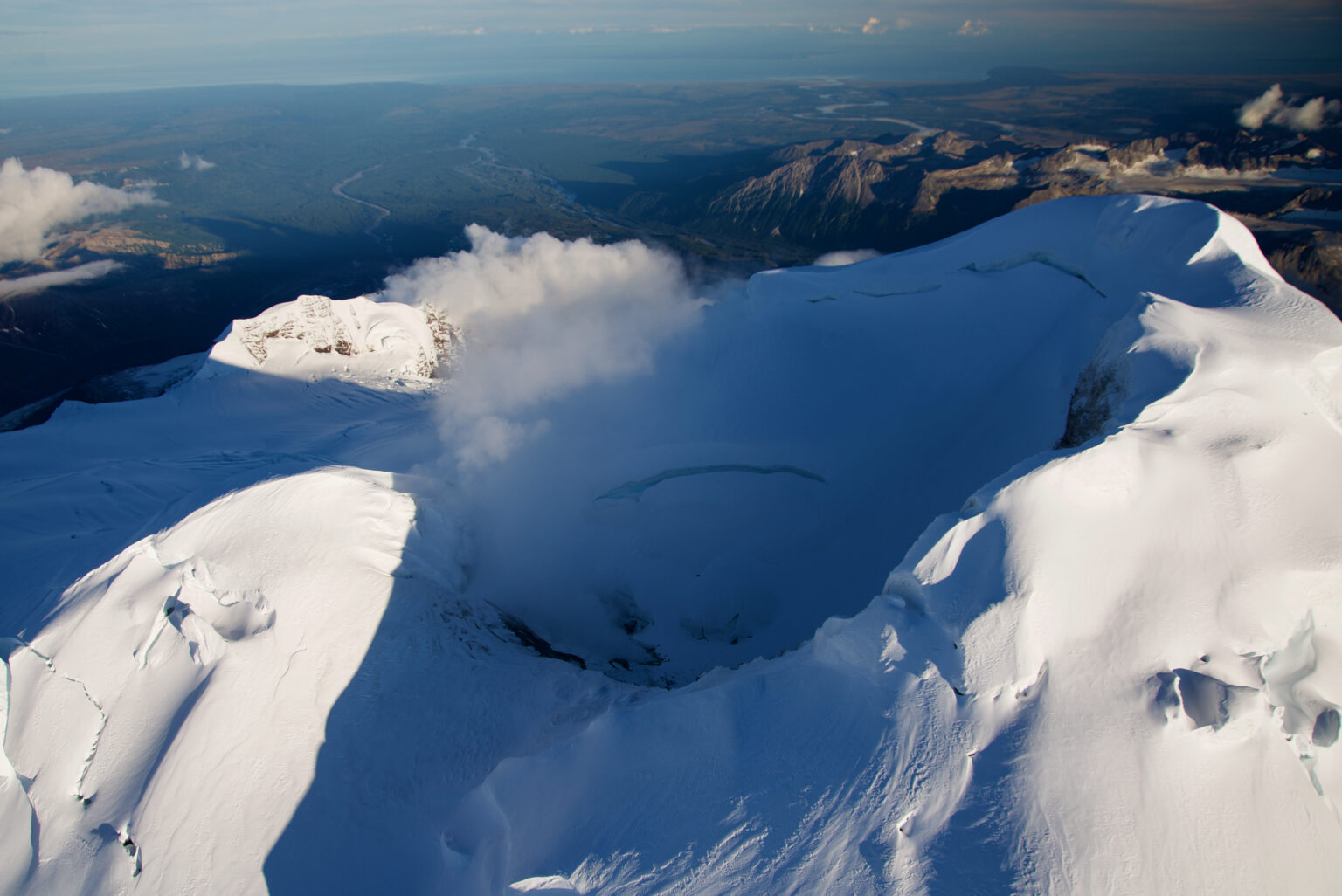GEOTHERMAL IS FRACKING
Alaska Division of Oil and Gas plans geothermal lease sale for volcano near Anchorage
Mount Spurr, 80 miles from Alaska’s biggest city, was the site of past lease sales and ambitions — new policies might help make development a success, the division says

The Alaska Division of Oil and Gas is preparing to hold a lease sale offering rights to explore for geothermal energy resources of Mount Spurr, a snow-capped volcano about 80 miles northwest of Anchorage.
The decision was announced on July 28 by Division Director Derek Nottingham
It comes two years after the division issued noncompetitive permits to two companies to explore geothermal energy resources on specific parcels on the 11,070-foot Spurr, the closest of Alaska’s numerous active volcanoes to the state’s largest city.
If the division follows through, this would be the fourth competitive lease sale held for Mount Spurr geothermal resources, after sales in 1983, 1986 and 2008.
The most successful of those past competitive auctions, the 2008 sale, resulted in the leasing of about 36,000 acres and an exploration drilling program carried out by Ormat Technologies, one of the world’s leading geothermal companies. However, Ormat dropped its Mount Spurr program in 2015.
There are reasons to believe that leasing this time will produce a more successful result, according to the analysis issued by Nottingham.
Under the Inflation Reduction Act of 2022, there are several new financial incentives for geothermal energy development, including a federal tax credit up to 30% through 2032, tax credits for geothermal power plants and credits for makers of geothermal technologies, the document siad.
“In sum, federal energy policy has shifted significantly since the noncompetitive permits were issued in 2021, which has generated renewed interest in geothermal exploration,” the document said.

The companies granted permits in 2021 for Mount Spurr exploration were GeoAlaska LLC., which got rights to explore 6,376 acres, and Raser Power Systems LLC., which got rights to explore 7,666 acres.
The Division of Oil and Gas plan for a future lease sale, with a date yet to be determined, includes a provision for those leaseholders to submit bids in the competitive process. Leases would be for 10-year terms, the typical duration in leases offered by the division.
The state’s plan to sell leases competitively makes sense, said Paul Craig, GeoAlaska’s president.
The Mount Spurr exploration permits granted in 2021 were for terms of only two years, with an option for a one-year extension, which is “not a realistic timeline” for getting a geothermal prospect explored, Craig said.
“We’re really pleased that the state made this decision,” he said.
Craig declined to say whether GeoAlaska would bid in an upcoming competitive lease sale. “What I can guarantee you is GeoAlaska has the rights to highly prospective geothermal prospects, and we fully intend to explore and develop those prospects to the benefit of Alaska,” he said.
GeoAlaska has been doing on-site work at Mount Spurr, and it is also using data collected by Ormat during that company’s exploration program, Craig said.
GeoAlaska also holds a similar state exploration permit for Augustine Volcano, the 4,134-foot Cook Inlet island peak located about 175 miles southwest of Anchorage, and the company has done some preliminary on-site work there. The Augustine permit was granted by the Division of Oil and Gas last year.

There has been interest in Augustine’s geothermal prospects but never any exploration drilling like that conducted by Ormat at Spurr.
The division is currently soliciting public comment on possible plans to allow more geothermal exploration at Augustine, either through permits or leases.
Both Spurr and Augustine have had explosive eruptions in the recent decades.
A series of explosions at Spurr in 1992 dumped ash on Anchorage and other Cook Inlet communities, according to the Alaska Volcano Observatory, a joint program of the U.S. Geological Survey, the University of Alaska Fairbanks and the Alaska Division of Geological and Geophysical Surveys.
Augustine’s most recent eruption was in early 2006 and produced both ash clouds and lava flows, the observatory reported. A 1986 eruption also sent ash across the Cook Inlet region, including to Anchorage, according to the observatory.
The history of eruptions is considered when GeoAlaska sends work crews to the sites, Craig said. If the Alaska Volcano Observatory issues any kind of alert about potential eruptions, crews are pulled out, he said.
There are more than 50 Alaska volcanoes that have been active since the mid-18th century, according to the U.S. Geological Survey. The Alaska Volcano Observatory monitors more than 20 of them with continuously recording devices that are installed on the volcanos to measure their seismic activity. On Friday, five Alaska volcanoes were showing varying signs of activity. One, Shishaldin in the eastern Aleutians, was erupting explosively and sending an ash cloud to more than 30,000 feet above sea level, into the zone used by commercial aircraft. Another, Great Sitkin in the western Aleutians, was producing a slow stream of lava with its ongoing eruption. Three others had signs of seismic unrest that might be a precursor to eruptions, the observatory reported.
Alaska Beacon is part of States Newsroom, a network of news bureaus supported by grants and a coalition of donors as a 501c(3) public charity. Alaska Beacon maintains editorial independence. Contact Editor Andrew Kitchenman for questions: info@alaskabeacon.com. Follow Alaska Beacon on Facebook and Twitter.
No comments:
Post a Comment